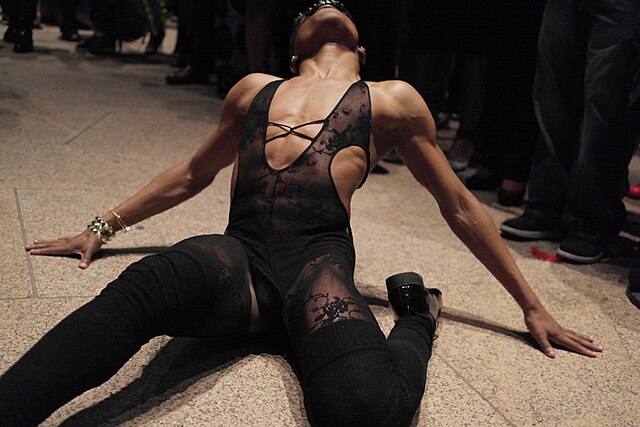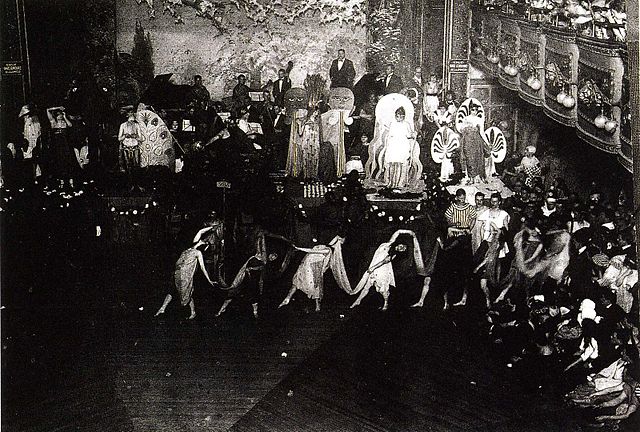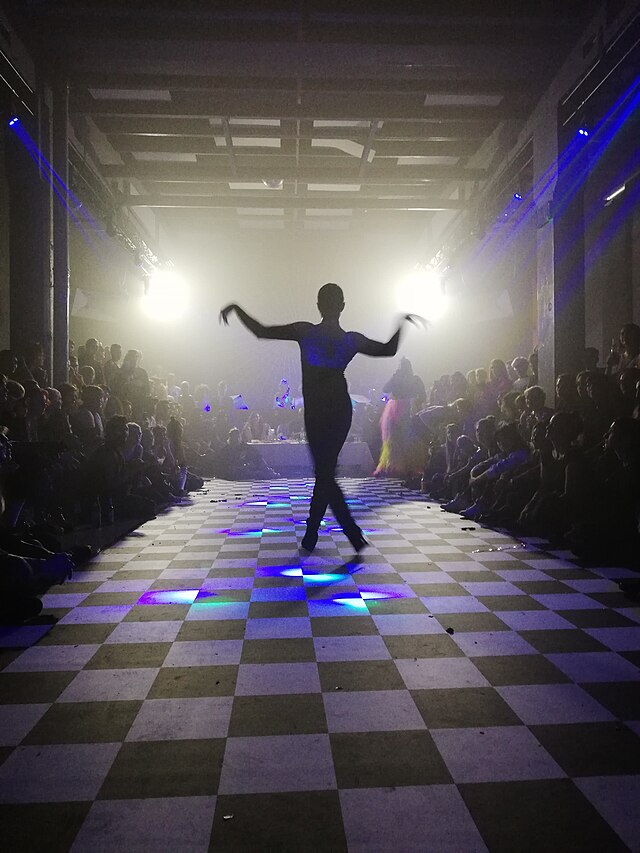28 June 2024
Dance is frequently a use of radical self-expression, using movement where words won’t suffice, and in few communities is this as evident as the Ball Scene (not to be confused with ISTD's own Modern Ballroom).

The Ball Scene, also known as the Ballroom community or culture, is a subculture of the LGBTQIA+ community, while also being rooted in Latino and African-American communities of major American cities.
Originating from ‘Drag Balls’, events attended by men that encouraged same-sex dancing and cross-dressing that rose to prominence in America during the mid-19th Century, the first vestiges of Ball culture could be seen in the 1960s, wherein gender-inclusive Balls began to be held in Harlem, Washington DC and other population hubs.

1920s picture of a Drag Ball in Webster Hall, Greenwich Village, NYC
Get the Ball rolling
Soon, Balls became increasingly important in their communities, giving a platform to dancers and artists to gain prestige and recognition, whilst expressing themselves amongst their peers.
No rigid set format is followed during Balls, but instead participants, usually from Houses, walk ‘categories’ – dressing, walking and dancing to specific themes/rules set out by those running the Ball. Often these emulated and satirised gender, class, and jobs, letting competitors express themselves in ways they might not in usual day-to-day life.

Ball-room dancing
Dance is often an integral element of walking a category, though not always explicitly: participants use their physicality to present themselves, often including elements of dance into their walk, becoming an expression of the category itself. Some categories were less to do with the clothes one wore, but the way you move, with dance-centric categories often being featured.
"Participants use their physicality to present themselves... becoming an expression of the category itself."
Voguing is perhaps the dance form most commonly associated with the Ball Scene: an improvisational dance form inspired by models photographed for fashion magazines – creating a dance form characterised by fluid movements, precise and angular posing, symmetry and ‘stunts’.
Leiomy Maldonado, founder of the House of Amazon and commonly viewed as one of the best voguers of today, defines five fundamentals of voguing: catwalk, duckwalk, hand performance, floor performance and spins and dips.
Keep your eye on the Ball
Media depictions of the Ball Scene are numerous, but several notable depictions have led to this formerly underground scene being given a spotlight in recent years:
Perhaps the most famous depiction of the Ball Scene was in 1990’s Paris is Burning, a documentary exploring the Ball Scene of New York City in the mid-late 1980s, interviewing prominent members of the culture from multiple legendary Houses.
The Ryan Murphy-led Pose ran for 3 seasons from 2018-2021, following the fights and plights of several characters across multiple Houses in the Ball Scene of New York City, inspired by the stories of dancers such as Crystal LaBeija – the woman most commonly thought to have founded the House system and perhaps Ball culture at large.
Legendary, a recent reality TV competition series, was fundamentally based in the world of Ball culture, following a series of Houses as they fought through multiple Balls, featuring dancing, voguing and walking events. Many of these houses were the modern-day iterations of legendary Houses that have existed from the beginning of the Ball Scene, showing the evolution and legacy Houses have - not just as a performing group, but as chosen family and a support structure.
Beyond media, the Ball Scene has had a huge impact on modern slang – along with current cultural staples such as RuPaul’s Drag Race and the aforementioned shows, ballroom vernacular originated terms such as ‘reading’ (wittily exaggerating someone’s flaws and negative qualities), ‘shade’ (an extension of reading, moreso backhanded compliments than insults), ‘fierce’ (a positive affirmation) and ‘mother’ (synonymous with ‘legend’, usually attributed to the head of a house).









